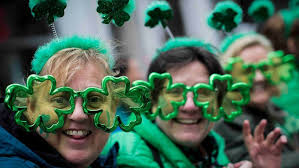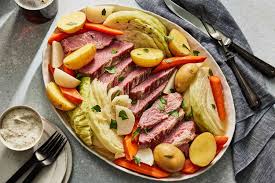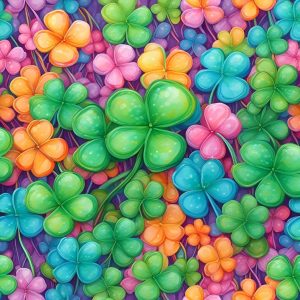St. Patrick’s Day, observed on March 17th, is one of the most widely celebrated cultural and religious holidays in the world. What started as a religious feast day for the patron saint of Ireland, Saint Patrick, has evolved into a global celebration of Irish culture, heritage, and everything green. From parades to lively music, dancing, and the sharing of hearty meals, St. Patrick’s Day brings people together to honor not only Ireland’s history but also the universal spirit of camaraderie and joy.
The Origins of St. Patrick’s Day
The roots of St. Patrick’s Day lie deep in the history of Ireland, dating back to the 5th century. Saint Patrick, a Christian missionary, is credited with bringing Christianity to Ireland and converting the Irish people from their pagan beliefs. It is said that Patrick used the three-leafed shamrock, a native plant, to explain the concept of the Holy Trinity Father, Son, and Holy Spirit to the Irish people. Over time, St. Patrick’s Day became a religious holiday to celebrate his life and work, particularly in Ireland.
The date of March 17th is believed to be the day of Saint Patrick’s death in 461 AD. For centuries, the day was marked by religious observances and quiet reflection, with many attending mass and other services. However, as Irish immigrants spread across the world, especially to the United States, St. Patrick’s Day began to take on a more festive character, with parades, parties, and public celebrations that blended Irish customs with local traditions.
The Global Celebration
While St. Patrick’s Day began in Ireland, its observance now spans the globe. From New York to Sydney, London to Tokyo, people from all walks of life join in the festivities. It is a day when Irish pride takes center stage, and people of all backgrounds are invited to participate in the fun.
One of the most iconic features of St. Patrick’s Day celebrations is the wearing of green. The color green is associated with Ireland, often referred to as the “Emerald Isle” for its lush, green landscape. Green also has a cultural connection to Irish folklore, particularly the mythological leprechauns, who are said to wear green coats to remain invisible to humans. The tradition of wearing green on St. Patrick’s Day has become so ingrained in the celebration that it is now a must-do, with people sporting everything from green clothing to green hats, accessories, and even dyed green food and drinks.

Parades and Festivals
Perhaps the most notable of St. Patrick’s Day traditions are the parades. These lively processions feature marching bands, dancers, bagpipers, floats, and sometimes even animals. The first St. Patrick’s Day parade took place in New York City in 1762, when Irish soldiers serving in the British Army marched through the city. Today, the Big Apple’s St. Patrick’s Day parade is one of the largest and most famous in the world, attracting millions of spectators every year. Cities like Boston, Chicago, and Dublin also host major parades that showcase the rich cultural heritage of Ireland.
In addition to parades, many communities host festivals with traditional Irish music, dancing, food, and beverages. Irish folk music, with its distinctive rhythms and instruments like the fiddle, flute, and bodhrán, fills the air. Ceilidh dancing (pronounced kay-lee), which involves energetic group dances, is often performed at these gatherings, adding a lively, communal spirit to the celebrations. Whether it’s a local pub, an outdoor street festival, or a grand-scale event, the sound of Irish music is sure to be heard on St. Patrick’s Day.
The Shamrock and Other Symbols
One of the most recognizable symbols associated with St. Patrick’s Day is the shamrock, a three-leafed clover. Legend has it that St. Patrick used the shamrock to explain the Christian doctrine of the Trinity to the Irish people. Over time, the shamrock became a symbol of Ireland itself, representing both the nation and its rich cultural heritage. Today, the shamrock is often seen on everything from clothing to jewelry and decorations.
The leprechaun, another well-known figure in Irish mythology, is also synonymous with St. Patrick’s Day celebrations. Leprechauns are mischievous, fairy-like creatures who are often depicted as small, bearded men wearing green coats and buckled shoes. According to legend, leprechauns hide their pots of gold at the end of rainbows, adding an element of whimsy and magic to the holiday. In fact, leprechauns have become one of the most beloved symbols of St. Patrick’s Day, appearing on everything from party decorations to costumes.

Irish Food and Drink
No St. Patrick’s Day celebration would be complete without indulging in traditional Irish food and drink. Irish cuisine is hearty and comforting, with dishes like corned beef and cabbage, Irish stew, and soda bread taking center stage. Corned beef and cabbage, although not traditionally Irish, became popular among Irish immigrants in America and has become synonymous with St. Patrick’s Day meals.
Of course, no celebration of St. Patrick’s Day is complete without a toast or two. Many revelers raise a glass of Guinness, Ireland’s iconic stout, or sip on Irish whiskey, such as Jameson, which has been distilled in Ireland for centuries. In recent years, even green beer has become a popular novelty drink, especially in the United States. However, for those seeking something non-alcoholic, Irish soda bread or a warm cup of Irish tea offers a perfect way to embrace the day’s spirit.
St. Patrick’s Day Around the World
While St. Patrick’s Day celebrations are especially prevalent in countries with large Irish populations, such as the United States, Canada, and Australia, the holiday has grown to be a global phenomenon. In places like Japan, South Korea, and Brazil, people embrace Irish culture through events, music, and dance. Some landmarks, including the Sydney Opera House in Australia and the Colosseum in Rome, even turn green to mark the occasion.
In Ireland itself, St. Patrick’s Day is a national holiday, and Dublin hosts one of the largest festivals in the world, featuring parades, concerts, and other cultural activities. However, the Irish government has worked hard to ensure that the day is not only about revelry but also about honoring the rich cultural heritage of the nation. The St. Patrick’s Day Festival in Dublin is a vibrant celebration of art, literature, and the arts, offering something for everyone to enjoy.

Conclusion
St. Patrick’s Day has come a long way from its origins as a religious observance in Ireland. Today, it is a global celebration that brings people together to celebrate Irish culture, history, and the universal joys of music, dance, food, and friendship. Whether you’re Irish by birth or simply Irish for the day, St. Patrick’s Day offers an opportunity to wear green, enjoy traditional Irish dishes, and raise a glass in honor of a holiday that celebrates both heritage and the spirit of community. So, whether you’re marching in a parade, dancing at a festival, or simply enjoying a pint of Guinness, remember to embrace the festive spirit and enjoy the luck of the Irish.
